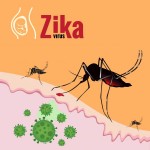Parkinson’s Disease
It is a degenerative disorder of the central nervous system. Parkinson’s disease is a condition in which part of the brain becomes progressively more damaged over many years (a progressive neurological condition). The motor symptoms of Parkinson’s disease result from the death of dopamine-generating cells in the substantia nigra, a region of the midbrain; the cause of this cell death is unknown.
Parkinsonian syndromes can be divided into four subtypes according to their origin:
Primary or idiopathic
Secondary or acquired
Hereditary parkinsonism
Parkinson plus syndromes or multiple system degeneration.
Symptoms
The three most common symptoms are:
Tremors: It is uncontrollable shaking known as tremor. These tremors usually begins in the hand or arm. It is more likely to occur when the limb is at rest and can be more noticeable when the patient is stressed, anxious or tired.
Bradykinesia: (Slowness of movements) It is another characteristic feature of PD which is associated with difficulties along the course of the movement process, from planning to initiation and finally execution of a movement.
Rigidity: It is stiffness and resistance to limb movement caused by increased muscle tone, an excessive and continuous contraction of muscles.
Other symptoms include:
Dystonia: Involuntary muscle cramps
Postural instability
Depression
Anxiety
Causes
Most people with Parkinson's disease have idiopathic disease (having no specific known cause).
Loss of nerve cells
Parkinson's disease is caused by a loss of nerve cells in the part of the brain called the substantia nigra. Nerve cells in this part of the brain are responsible for producing a chemical called dopamine. Dopamine acts as a messenger between the brain and the nervous system, and helps control and co-ordinate body movements. If these nerve cells become damaged or die, the amount of dopamine in the brain is reduced. This means that the part of the brain controlling movement cannot work so well, which causes movements to become slow and abnormal. The loss of nerve cells is a slow process. The level of dopamine in the brain falls over time. Only when 80% of the nerve cells in the substantia nigra have been lost will the symptoms of Parkinson's disease appear and gradually become more severe.
Other factors associated with the Parkinson's disease are:
Genetics PD has been generally considered as a non-genetic disorder however, rarely it is seen to run in the families.
Environment Factors have been associated with an increased risk of Parkinson's including:
1) Pesticide exposure
2) Head injuries
3) living in the rural area or farming
4) Air pollution related to road traffic
Diagnosis
A physician will diagnose Parkinson's disease from the medical history and a neurological examination. There are no lab test that will clearly identify the disease, but brain scans are sometimes used to rule out disorders that could give rise to similar symptoms
Treatments
The drugs useful for treating motor symptoms are levodopa (usually combined with a dopa decarboxylase inhibitor or COMT inhibitor), dopamine agonists and MAO-B inhibitors .
Two stages are usually distinguished:
In initial stage individual with PD develops some disability for which he needs pharmacological treatment.
Second stage in which an individual develops motor complications related to levodopa usage.
Treatment in the initial stage aims for an optimal control between symptoms and side-effects resulting from improvement of dopaminergic function. The start of levodopa (or L-DOPA) treatment may be delayed by using other medications such as MAO-B inhibitors and dopamine agonists, in the hope of delaying the onset of dyskinesias.
In the second stage the aim is to reduce symptoms while controlling fluctuations of the response to medication. Sudden withdrawals from medication or overuse have to be managed.
Surgery: When medications are not enough to control symptoms, surgery and deep brain stimulation can be of use. In the final stages of the disease, palliative care is provided to improve quality of life.
Preventions
Caffeine consumption appears protective against Parkinson's disease with a greater decrease in risk occurring with a larger intact of caffeinated beverages such as coffee increases.
Although tobacco smoke decreases life expectancy and quality of life, it may reduce the risk of PD by a third when compared to non-smokers . The basis for this effect is not known, but possibilities include an effect of nicotine as a dopamine stimulant.
References:
MedlinePlus
Parkinson.Org









